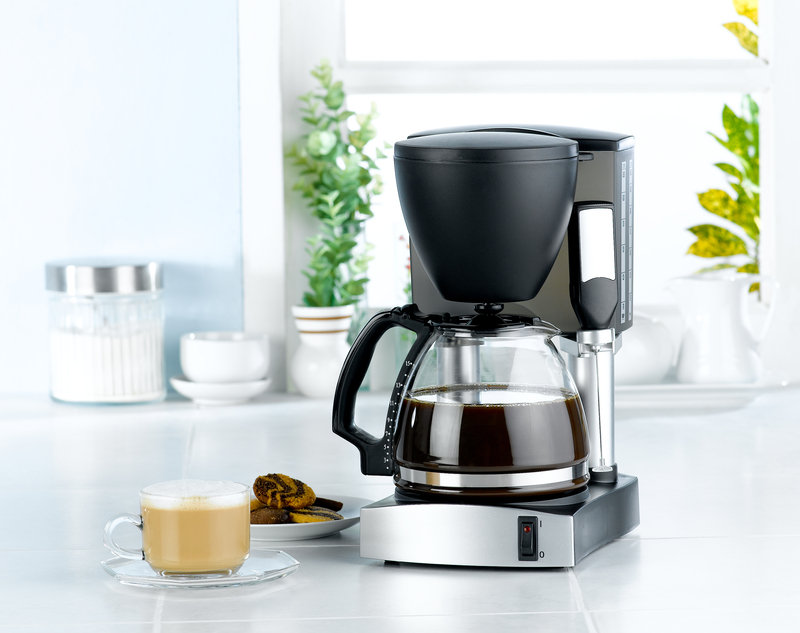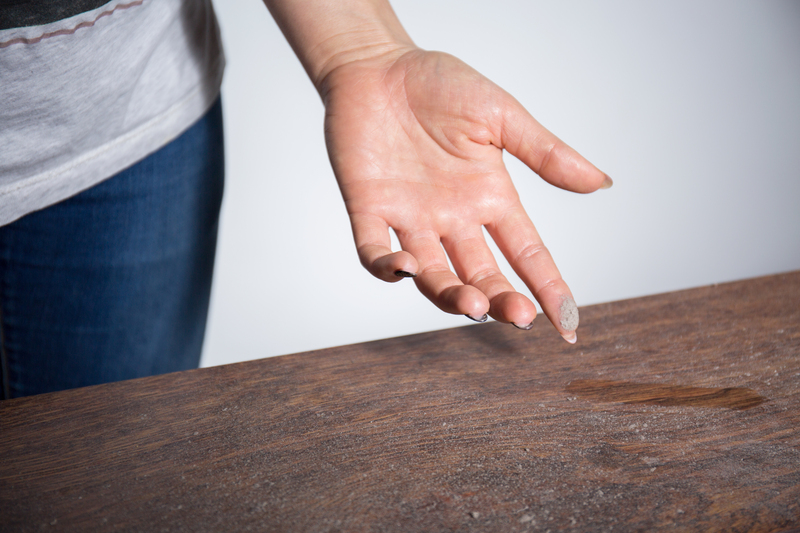Secrets to a Spotless, Mold-Free Bathroom
Posted on 16/09/2025
Secrets to a Spotless, Mold-Free Bathroom
A bathroom should be a haven of cleanliness and freshness. However, maintaining a mold-free, spotless bathroom can be challenging due to constant moisture, humidity, and regular use. Whether you're an avid home improver or someone struggling with persistent mold problems, we'll reveal all the essential secrets and effective strategies to keep your bathroom sparkling clean--year-round!
Why Is Mold a Common Bathroom Issue?
Understanding why mold loves bathrooms is the first step in achieving a spotless, mold-free bathroom. Bathrooms naturally provide an environment where mold and mildew can thrive, namely:
- High Humidity: Showers and baths generate steam, raising humidity levels.
- Poor Ventilation: Many bathrooms have minimal airflow, making it hard for moisture to escape.
- Organic Materials: Mold feeds off soap scum, skin cells, and dust that accumulate in grout and fixtures.
- Frequent Water Use: Splashing, spills, and leaks create damp surfaces perfect for mold growth.
Preventing mold requires understanding these factors and implementing consistent cleaning and moisture control practices.

The Fundamentals: Daily and Weekly Bathroom Cleaning Habits
Consistency is key for maintaining a mold-free and spotless bathroom. Establishing daily and weekly habits will greatly reduce grime, bacteria, and the risk of mold taking hold.
Daily Bathroom Cleaning Secrets
- Wipe Down Wet Surfaces: After using the shower or sink, use a squeegee or microfiber cloth to wipe away water drops on tiles, glass doors, and mirrors. This simple habit eliminates excess moisture.
- Let in Fresh Air: Open windows or turn on the exhaust fan for at least 15-20 minutes post-shower to promote air flow and minimize humidity.
- Hang Towels and Mats: Avoid leaving towels or bath mats in damp piles. Hang them to dry thoroughly after each use.
- Quick Spot Cleaning: Spot clean splashes, limescale spots, and toothpaste residue from faucets and sinks as soon as you see them.
Weekly Deep Cleaning Techniques
- Scrub Grout and Tiles: Pay special attention to grout lines between tiles, as these are hotspots for mold and mildew. Use a grout brush and a bathroom cleaner formulated for mold prevention.
- Clean Drains Regularly: Hair and soap buildup in drains provide the perfect breeding ground for bacteria and mold. Use a drain cleaner or vinegar and baking soda solution weekly.
- Disinfect High-Touch Areas: Light switches, handles, and toilet flush levers should be wiped down with a disinfectant to keep bacteria and germs at bay.
- Launder Shower Curtains and Liners: Wash fabric or plastic curtains and liners in the washing machine monthly to remove soap scum and mold spores.
Moisture Control: The Absolute Secret Weapon
Most mold problems can be traced back to excess moisture. Controlling bathroom humidity is crucial to a spotless, mold-free bathroom.
Best Practices for Reducing Bathroom Humidity
- Install or Upgrade Your Exhaust Fan: Ensure your bathroom has a powerful vent fan, and run it during and after every bath or shower.
- Open Doors and Windows: Allow air to circulate freely when possible. Keeping doors and windows open during and after use speeds up drying time.
- Use a Dehumidifier: For persistently damp bathrooms, a small dehumidifier can maintain optimal humidity levels (ideally between 40-50%).
- Fix Leaks Promptly: Dripping faucets, leaking showerheads, or pipe issues must be fixed immediately to prevent persistent moisture.
- Choose Mold-Resistant Materials: Consider mold-resistant paint or waterproof wallpaper, especially in high-moisture areas.
Waterproofing Tips for a Mold-Free Bathroom
- Seal Grout and Tiles: Apply a grout sealer once or twice a year to create a waterproof barrier that resists mold penetration.
- Check Around the Tub and Shower: Ensure caulking is intact and replace cracked or missing caulk to block water intrusion.
- Use Shower Splash Guards: These help keep water where it belongs and off the bathroom floor.
Mold-Prevention Products: Do They Work?
There are many bathroom cleaning products specifically designed for mold prevention and removal. Here's how to choose the right ones:
Best Mold-Fighting Cleaners
- Bleach-Based Sprays: Excellent for killing existing mold on hard, non-porous surfaces--just ensure proper ventilation during use.
- Hydrogen Peroxide Cleaners: A safer alternative to bleach, it is effective at tackling mold and general stains.
- Vinegar and Baking Soda: Natural, non-toxic, and surprisingly effective for most bathroom surfaces. Use vinegar for daily wipe-downs and baking soda as a gentle abrasive.
- Anti-Mold Paints & Coatings: For a long-term solution, apply these to walls and ceilings to prevent future growth.
DIY Mold Prevention Solutions
- Tea Tree Oil Spray: Mix a teaspoon of tea tree oil with a cup of water in a spray bottle. This natural solution is highly effective at killing mold spores.
- Essential Oil Cleaners: Add lavender, eucalyptus, or lemon essential oils to homemade cleaners for a fresh scent and extra fungus-fighting benefits.
- Daily Vinegar Spray: Keep a spray bottle of undiluted white vinegar handy and spritz shower walls and curtains daily after use.
Key Spots You're Forgetting During Bathroom Cleaning
Even the most diligent homeowner may overlook certain areas, leading to unexpected mold outbreaks. Here are commonly missed danger zones that require attention:
- Behind the Toilet: Dust and moisture often collect here--wipe down regularly to prevent odor and mold growth.
- Under Sink Cabinets: Leaks and humidity can cause mold colonies. Ensure this area is dry and organized.
- Ceilings and Corners: Steam rises and condenses in corners and ceilings--wipe these areas with an anti-mold cleaner monthly.
- Shower Caddies and Soap Dishes: Soap residue and water make these a breeding ground for mildew. Clean and dry them weekly.
- Ventilation Fans: Dusty, clogged fans won't remove moisture effectively. Vacuum and wipe fan covers every few months.
How to Remove Mold from Your Bathroom Safely
If you spot mold in your bathroom, immediate action is necessary to maintain a spotless, mold-free environment and safeguard your family's health. Here's an effective process for safe removal:
Simple Mold Removal Steps
- Protect Yourself: Wear gloves, a mask, and goggles, especially if dealing with substantial mold colonies.
- Prepare a Cleaning Solution: Mix one part bleach to ten parts water, or use an anti-mold bathroom cleaner.
- Apply and Scrub: Spray the affected area liberally. Allow to sit for 10-15 minutes, then scrub with a stiff brush or sponge.
- Rinse Thoroughly: Wipe away residue with clean water and dry the area completely.
- Repeat for Stubborn Mold: Several applications may be necessary for deeply rooted mold. If mold persists after multiple attempts, consider professional help.
When to Call a Professional
- Large-Scale Outbreaks: If mold covers an area larger than 10 square feet, seek professional remediation.
- Persistent or Hidden Mold: Recurring mold despite regular cleaning may indicate a structural issue or leak.
- Health Symptoms: If household members experience allergic reactions or respiratory symptoms, professional assessment is crucial.
Upgrades and Renovations for a Mold-Free Bathroom
Investing in your bathroom's infrastructure can yield a lower-maintenance, healthier, and perpetually spotless space. Consider these key upgrades:
Smart Renovation Ideas
- Switch to Mold-Resistant Materials: Use mold-resistant drywall, backer board, tile, paint, and grout in all high-moisture zones.
- Upgrade to a Frameless Glass Shower: Reduces leaks and is easier to clean than traditional framed enclosures.
- Install Underfloor Heating: Radiant floor heating keeps tiles warm and dry, discouraging moisture buildup.
- Touchless Faucets and Dispensers: Cut down on cross-contamination and make it easier to keep sinks clean.
Simple Preventive Upgrades
- Replace Old Caulk and Grout: Old, cracked caulk and grout are magnets for mildew. Schedule regular inspections and replacements.
- Add Shelving for Organization: Clutter breeds dust and grime. Shelves and storage baskets make cleaning simpler and more effective.
- Invest in Fast-Drying Towels & Mats: Quick-dry fabrics decrease lingering dampness--a big win against mold growth.

Frequently Asked Questions: Mold in the Bathroom
How Often Should I Clean My Bathroom to Prevent Mold?
For a bathroom free of mold and stains, wipe down wet surfaces daily and perform a thorough clean weekly. Pay special attention to grout, drains, and behind fixtures.
What Are the Best Natural Methods for Keeping a Mold-Free Bathroom?
Vinegar and tea tree oil are both excellent, natural deterrents. Keep surfaces dry, increase air circulation, and use these solutions to clean tiles, glass, and curtains.
Can Mold in the Bathroom Make You Sick?
Yes. Mold spores can trigger allergic reactions, worsen asthma, and even cause infections. Children, the elderly, and those with compromised immune systems are at higher risk. That's why a mold-free bathroom is crucial.
Final Thoughts: A Spotless, Mold-Free Bathroom Is Within Reach!
Achieving and maintaining a spotless, mold-free bathroom is not just about hard work--it's about working smarter. With the right habits, products, and preventative steps, you can create a comfortable oasis free from dirt, stains, and the health hazards of mold.
Consistency, vigilance, and moisture control are the pillars of a perpetually clean, healthy bathroom. Start today with daily wipe-downs, weekly deep cleaning, and simple upgrades to prevent mold and mildew. Your home--and your health--will thank you!
- Clean regularly and dry surfaces frequently.
- Control bathroom humidity with ventilation and dehumidifiers.
- Use proven anti-mold cleaners or natural solutions like vinegar and tea tree oil.
- Don't ignore hidden or persistent mold--seek professional help if needed.
- Upgrade smartly for long-term, low-maintenance cleanliness.
With these secrets to a spotless, mold-free bathroom, you can enjoy a cleaner, safer, and more inviting space every day!




